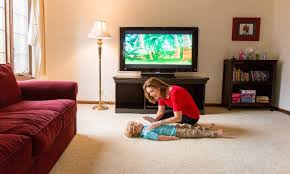Infants, CF, and Chest PT
With the onset of infant screening for cystic fibrosis the diagnosis is most often being made before lung and digestive symptoms begin. In addition, new evidence is showing that lung disease often begins very early in the life of a child with CF. There may be no coughing, and x-rays may appear normal, but some studies have detected evidence of inflammation and air trapping in infants, only weeks old. Air trapping occurs when air is able to enter the lung, but cannot get out of some areas because the airway opening is too small. This happens due to inflammation and/or infection and perhaps a build up of mucus in the tiniest of the bronchial airways. Because CF lung disease starts in the small airways and begins with air trapping, we recommend that chest PT begin very early in the life of a child with CF, even prior to cough symptoms, to help eliminate, reduce and prevent air trapping. Some evidence exists that head down tipping of infants in the typical postural drainage positions can lead to gastric reflux. Therefore, we no longer tip infants during chest physical therapy. Discuss this with your CF Center physician and healthcare team.
While there seems to be a very good medical reason to begin chest PT early in the life of an infant with cystic fibrosis, there is also a quite practical one. This is the easiest time in the life of a patient with CF to perform chest PT. It is also an easy time for parents to learn chest physical therapy, become involved in their child’s care, establish good habits and routines, and fight back against this serious diagnosis.
Chest PT for infants is not much more difficult for parents than burping a baby. Also, the infant receiving daily chest PT is more likely to grow into a toddler who has learned to accept the routine as a normal part of their day. Before infant screening, the diagnosis of CF was most often made when a child became quite ill. In most cases we find that it is extremely difficult to start performing chest physical therapy with a two or three year old child who has not become accustomed to this daily treatment.
Consider also that the child may not be feeling well, that the parents are just learning the techniques themselves, and that they have the added pressure that their child’s health relies upon their success in completing this new treatment. Attempts by parents to begin chest PT with their child after the child can walk have far too often been failures due to a noncompliant child. Prior to infant screening this unfortunate scenario had no answer since most children needed to have persistent cystic fibrosis symptoms before they were diagnosed. Infant screening brought about the possibility that these horrendous situations can be eliminated for patients and parents. Yet unfortunately, this scenario continues today when chest PT treatment is delayed until a congested cough develops.
If chest physical therapy is begun in early infancy to prevent CF lung disease, and later at age ten, or even twenty, the patient still has no symptoms of airway disease, will chest PT have been a waste of time – or will it have worked? Many of our patients and their parents who began early chest PT treatment hold the answer to that question in their hearts, and would not have accepted the risk of waiting longer to begin care.